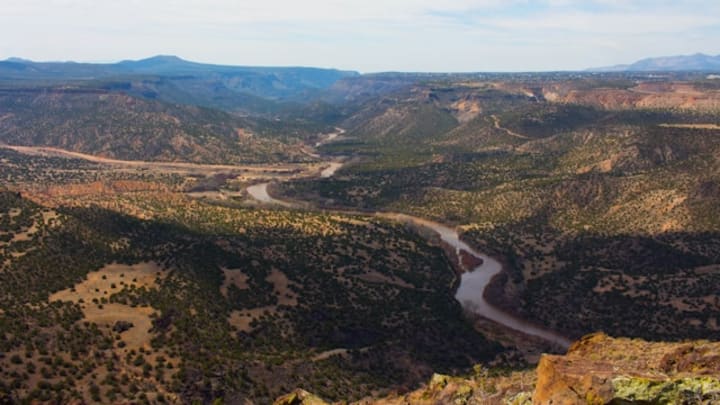Scientist, Government at Odds Over Los Alamos Radioactive Contamination

Hiking through Los Alamos in New Mexico is one of the most popular activities in the area. But, people could be more at risk than they are aware of, according to North Arizona University scientist Michael Ketterer.
Acid Canyon, which got its name because of its location near where the world’s first atomic bombs were developed, allegedly has radioactive waste contamination levels comparable to that of Chernobyl.
“This is one of the most shocking things I’ve ever stumbled across in my life,” Ketterer told the Guardian, as he compared his findings to those of Pripyat, where the Chernobyl nuclear power plant explosion in 1986 sent toxic waste into the area.
Surrounding the Los Alamos National Laboratory is Acid Canyon. When rain this summer led to runoff heading into the park, Ketterer took samples and was shocked by what was found.
“It’s just an extreme example of very high concentrations of plutonium in soils and sediments. Really, you know, it’s hiding in plain sight.”
Aptly named Acid Canyon, the area was a toxic waste dump for about 20 years when the Manhattan Project began at the start of World War II through 1964 with weapon research being conducted. In 1966, efforts began to clear up the area of all the toxic waste.
That clean-up continued until 1984 when the area was deemed safe for public use and became unrestricted. In all his years of studying radioactive sites around the United States, Ketterer still can’t believe what he is seeing in New Mexico.
“This is an unrestricted area. I’ve never seen anything quite like it in the United States.”
Based on what Ketterer has found in his studies, dangerous things could still be occurring. The food supply could be contaminated if plants are impacted and the water runoff into the Rio Grande.
Forest fires are dangerous enough, but radioactive ash could be kicked up if the levels are as dangerous as Ketterer believes them to be. However, the Department of Energy doesn’t believe Ketterer has found anything new.
In a statement, via the New York Post, they said, “it doesn’t reveal anything about Acid Canyon that hasn’t been publicly available for years — and that the present levels of radioactivity are consistent with what is widely agreed to be safe for use.”
While there are disagreements about how much radioactive exists, the safety of hikers and the wildlife calling Acid Canyon home should be the No. 1 priority of everyone. At the very least, Ketterer would like to see signage installed so that people explicitly know the risks they are taking.
“It really can’t be undone,” Ketterer said of the radioactivity.
“It’s kind of like trying to pick up salt that’s been thrown into a shag carpet. It’s crazy to think you’re going to get it all.”
Radioactive studies and work are set to actually increase at Los Alamos. As shared by the New York Post, the Department of Defense announced plans to have more production of plutonium cores.
